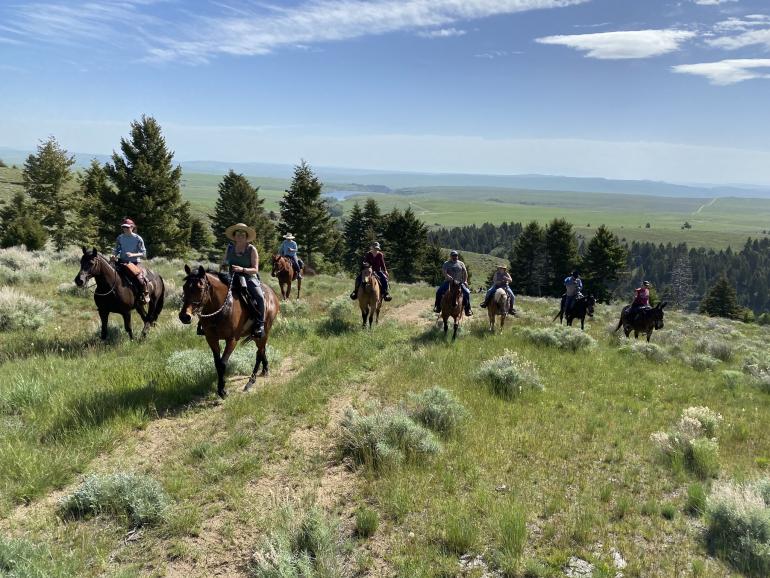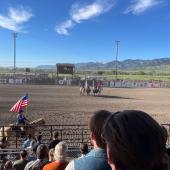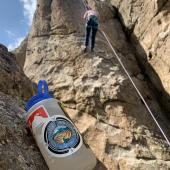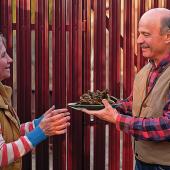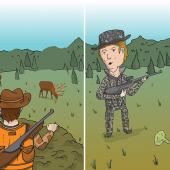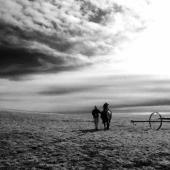No Horsin' Around
Basic equine safety.
One of the prettiest ways to see Montana is from the back of a horse – there's time to take in the views, stop and relax, and cover lots of ground without loud motors. With summer trail-riding upon us, and hunting season coming up, it’s extremely important to put safety first. Now, full disclosure: I'm not a trainer or expert, but I have spent the majority of my life on horseback, cowboying and starting colts. I've seen some hellacious wrecks and been in a few myself. I know how things can become dangerous in an instant. These are some basic tips for staying safe.
I often see recreational riders using low-quality equipment, and if a rein or cinch breaks, you might be in for a major wreck. I make a portion of my living year-round on horseback, so I have nice gear. While the best doesn't make sense for everyone, you want to at least make sure your gear is safe. That means no plastic or nylon on saddles; these materials disintegrate as they age and can end up breaking. Leather can break too, but it's typically much stronger. Using snaps to attach reins to bits is fine, but make sure they aren’t going to bust if you end up pulling on them hard.
Also, always check the piece attaching the front cinch to the back cinch. This should always be made of leather with a good buckle. If this breaks, the horse will end up flanked like a bronc and the rider will be in a bad spot. Take the time to clean and oil gear when breaking it out for the season. Well-kept leather is the strongest, safest material to use. I also strongly suggest using rope halters with long lead ropes at all times. Web halters have no feel, and properly handling a horse on the ground translates directly to how they ride on the trail.
Gear aside, when getting a horse out of the pasture for the season, don’t just jump on; even gentle horses can be extremely dangerous. If they have been out on grass they will be fresh and may act out of character. Some simple groundwork can test a horse to make sure it's ready to ride. I always make sure I can step my horse’s hip away from me. I do this by moving the horse around at a walk, running my hand up the lead rope to shorten it, and stepping into the horse’s shoulder. The horse’s neck should be softly bent toward me, and he should step away with one front foot and his hind feet. If a rider has control of a horse’s hindquarters, either on the ground or on horseback, she can stay out of a lot of trouble. This should all be slow and controlled; a lot of horses will step around fast, but that simply means they're avoiding pressure, not accepting what’s being asked of them. Also, make sure the horse’s shoulder isn’t leaning into you. This is extremely dangerous and is typically how people get run over by horses while on the ground. If the horse's neck is bent softly, his shoulder should also step away. This could take some patience; horses learn by pressure and release. Just remember to stay out of a position where the horse could kick you and keep a firm grip on your leadrope.
Lunging your horse is also a good indicator of whether or not it's ready to ride. Fresh horses may take some time to settle down, and before you hop on, they should walk, trot, and lope around you calmly without pulling on the lead rope. If you have to put much weight into keeping them pulled in a circle, slow them down, step their hips around, and get their attention.
For the best on-trail experience, your horse should first be well-mannered when you're on the ground. I never allow my horses to eat grass while I have ahold of them. When a horse is led, it should follow behind, not be in front. If a horse wants to be impatient and rude while I stand holding them, I'll tie it to a solid fence for an afternoon and let it throw its fit there. Tying horses up for several hours at a time is a harmless way for them to learn a lot of patience. They can paw and dance around for as long as they want, but they'll eventually learn to be patient and polite. If a horse wants to be pushy on the ground, don’t be afraid to make it back up and give you space.
People are seriously injured every year by horses. It's a chance we all take, most of us willingly, but taking steps to be safe can save a life. If things don’t feel safe, remember that the Gallatin Valley is full of horsemen ready to help. Don’t, however, buy into any funky programs – if someone tells you to spend a fortune on instructional DVDs, go somewhere else. I always turn to materials from people like Ray Hunt or Tom Dorrance – their techniques are applicable across disciplines.



